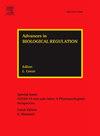Lysophosphatidic acid (LPA) receptor signaling modulates cellular functions of colon cancer cells under cobalt chloride-induced hypoxic conditions
IF 2.4
Q1 Biochemistry, Genetics and Molecular Biology
引用次数: 0
Abstract
In the tumor microenvironment (TME), hypoxia is critical in promoting tumor invasiveness and progression. Cobalt chloride (CoCl2) mimics hypoxia by inducing comparable cellular responses. Lysophosphatidic acid (LPA) receptors (LPA1 to LPA6) play key roles in regulating cancer cell functions. In this study, we investigated the impact of LPA receptor signaling on malignant properties of colon cancer DLD-1 cells under hypoxic condition induced by CoCl2. LPAR1 and LPAR2 expression levels were elevated in DLD-1 cells treated with CoCl2. CoCl2 treatment also stimulated DLD-1 cell motility. This enhanced motility induced by CoCl2 was reduced with LW6 (HIF-1 inhibitor). Additionally, the motility of CoCl2-treated DLD-1 cells was suppressed by AM966 (LPA1 antagonist) and enhanced by GRI-977143 (LPA2 agonist). Conversely, CoCl2 treatment decreased DLD-1 cell invasion. While AM966 further inhibited cell invasion, GRI-977143 elevated it. The cell viability to fluorouracil (5-FU) was higher in CoCl2-treated DLD-1 cells. This increased viability to 5-FU was further enhanced by both AM966 and GRI-977143. When CoCl2-treated DLD-1 cells were cultured in low-glucose media, LPAR1 expression was upregulated compared to high-glucose media, while LPAR2 expression was downregulated. Additionally, motility and invasion in CoCl2-treated DLD-1 cells were further stimulated under low-glucose conditions. These results suggest that LPA receptor signaling contributes to the malignant potential of DLD-1 cells in a hypoxic environment induced by CoCl2 treatment.
溶血磷脂酸(LPA)受体信号在氯化钴诱导的缺氧条件下调节结肠癌细胞的细胞功能
在肿瘤微环境(TME)中,缺氧是促进肿瘤侵袭和进展的关键。氯化钴(CoCl2)通过诱导类似的细胞反应来模拟缺氧。溶血磷脂酸(LPA)受体(LPA1 ~ LPA6)在调节癌细胞功能中起关键作用。在本研究中,我们研究了在CoCl2诱导的缺氧条件下LPA受体信号传导对结肠癌DLD-1细胞恶性特性的影响。在CoCl2处理的DLD-1细胞中,LPAR1和LPAR2表达水平升高。CoCl2处理也刺激了DLD-1细胞的运动。CoCl2诱导的这种增强的运动性被LW6 (HIF-1抑制剂)所降低。此外,cocl2处理的DLD-1细胞的运动性被AM966 (LPA1拮抗剂)抑制,而被GRI-977143 (LPA2激动剂)增强。相反,CoCl2处理降低了DLD-1细胞的侵袭。AM966进一步抑制细胞侵袭,而GRI-977143则提高细胞侵袭。cocl2处理的DLD-1细胞对氟尿嘧啶(5-FU)的存活率较高。AM966和GRI-977143进一步增强了对5-FU的活性。当cocl2处理的DLD-1细胞在低糖培养基中培养时,与高糖培养基相比,LPAR1表达上调,而LPAR2表达下调。此外,在低糖条件下,cocl2处理的DLD-1细胞的运动性和侵袭性进一步受到刺激。这些结果表明,在CoCl2诱导的缺氧环境下,LPA受体信号传导有助于DLD-1细胞的恶性潜能。
本文章由计算机程序翻译,如有差异,请以英文原文为准。
求助全文
约1分钟内获得全文
求助全文
来源期刊

Advances in biological regulation
Biochemistry, Genetics and Molecular Biology-Molecular Medicine
CiteScore
8.90
自引率
0.00%
发文量
41
审稿时长
17 days
 求助内容:
求助内容: 应助结果提醒方式:
应助结果提醒方式:


